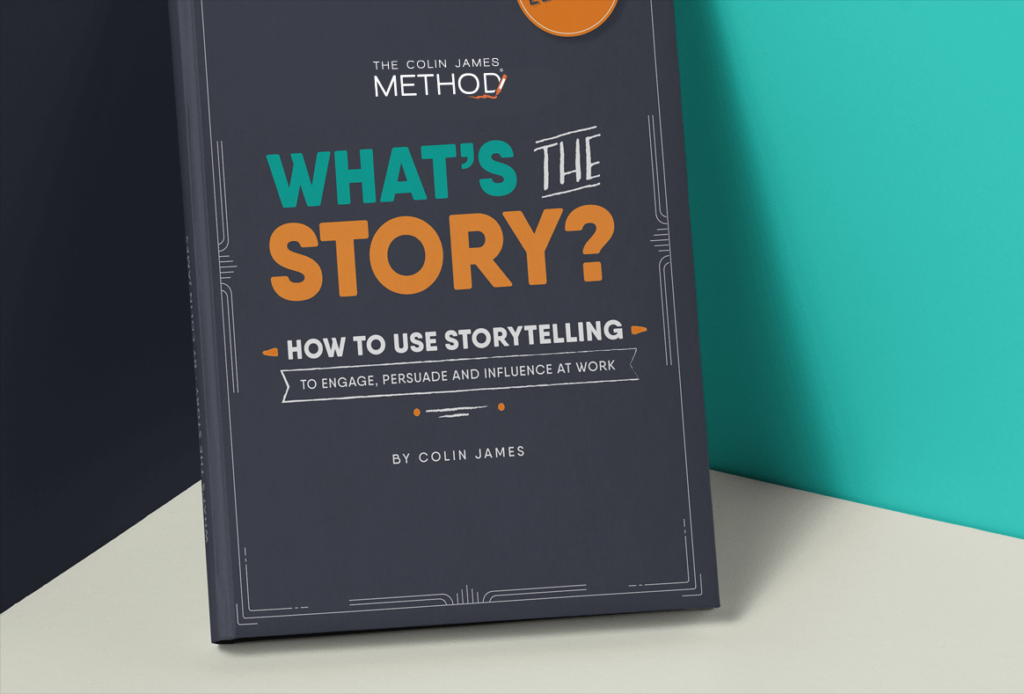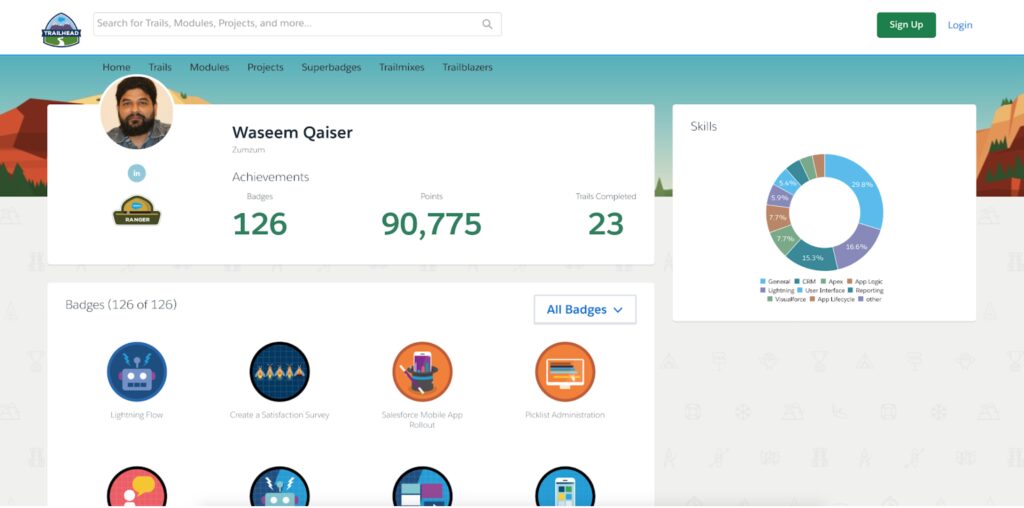Around 11pm, on May 6th, 2020, I was standing in front of my webcam, in a cobbled together “studio”, facilitating a global leadership team session. Relying on my sketchy broadband, I was connected from my home near Mount Macedon, 80km from Melbourne, Australia, speaking to an audience of 20 spread across the globe.
Shane Paladin, President of SAP Services Global, welcomed everyone and shared his perspective that the number one skill a senior leader needs right now is adaptability.
“Technology is driving massive change as everyone is subjected to digital transformation. COVID-19 has arrived at a time where technology enables us to work remotely, connect easily and allow us to be effective in our work. However, leading people through these times will require us to be intellectually, emotionally and psychologically adaptable to unpredictable and unprecedented change and uncertainty.”
He then said something that gave everyone pause for thought…
“The skills and philosophy of leadership we had yesterday will not work today and will be irrelevant tomorrow. As a C-suite group we must be avid learners. We have to show the thousands of people that we are responsible for, that learning is core to how we survive this time of massive transition across the planet.”
We spent the next four hours discussing and exploring Shane’s proposition.
Four key issues emerged:
- Technology has changed how we live, work and learn forever
- Adaptability + Speed + Execution = Success
- Learning is strategic
- The C-Suite must demonstrate the value of learning as part of our culture
Technology has changed how we live, work and learn forever
Digital transformation, Industry 4.0, AI and the like have changed content consumption and access forever. Real time generation, gathering, processing, and analysing of information/data means we don’t have a content problem in our world. We have real-time access to everything, everywhere, on multiple devices – all the time. Business happens in the immediate, now.
Whilst the ways we work, live, meet and play have changed forever, learning has been dragging.
Many executives are still running with 1990’s models. They still think of positional advantage in regard to the CVP (customer value proposition) and will extoll the value/benefits of the products and services. This no longer ensures viability. Adaptability, rapid innovation, the ability to turn and adjust in days, the capability to repoint and reposition in response to flux and change… these are the skills needed in today’s executives.
Where do they get the training for this? How do they learn?
Executive training and development has been ad hoc, normally done one-on-one via a coach or mentor with a low priority. Most people sitting around C-suite and boardroom tables rarely – if ever – subject themselves to learning outside the occasional study tour experience or their own self-managed learning approach.
This has to change. Adaptability is a core executive competence. A learning culture is needed around the C-suite table.
Adaptability + Speed + Execution = Success
To paraphrase Professor Anthony Stafford Beer – “Leadership may lead to great progress in good conditions; but, like the Grand Prix car in comparison with the Land Rover, leaders may not be robust enough to survive when the going gets tough.”
Adaptability in today’s climate is aligned with speed. COVID-19 has forced governments around the world to impose strict lockdown measures. Australia and the state of Victoria where I live has some of the strictest controls in the world.
Millions of employees are working remotely, away from their offices. The speed in which people have adapted to this new way of working has been remarkable. Citrix, and other companies, predicted this dispersed, remote workforce model would be the norm by 2030. COVID-19 has forced this change and caused us to rethink the speed of change. This challenges our approach to execution timeframes.
These new ways of working require new skills and new leadership approaches. Many consulting firms suggest that companies will need to upskill or reskill approximately 60% of their workforce over the next two to five years.
The skills of yesterday are fast becoming redundant. The skills of today may not apply tomorrow. Boston Consulting Group predicts that 1 billion jobs will need to be reconfigured over the next ten years.
What about executives? Who is providing the training they need to adapt to these times? What frameworks and models are they using to navigate this new territory?
Learning is strategic: If you cannot manage your own learning, you will become irrelevant fast.
“If you’re investing all of this time, effort, money, and energy in new digital technology, it’s probably time to invest an equal amount in upgrading the people technology: the brain. We call it the brain operating system. Because my contention is that unless you upgrade the brain operating system to handle all of this additional information and change, then there’s a high risk that the people and the company’s going to get caught like the deer in the headlights.”
– Phillip Campbell, cognitive scientist and CEO of enigmaFIT
How we learn is constantly being scrutinised and assessed. Billions are spent on training for often negligible return.
The virtual world and technology now allow us to deliver training more effectively – getting us away from the classroom to a more natural, organic, adaptive way of learning. This more than anything, will appeal to executives.
People learn best when the training is personal, hyper-relevant, delivered in bite-size chunks, built into daily routines with on-the-job application, and supported with personal contact and touchpoints over an extended period of time.
This new empirically validated process of learning has not yet fully entered the workplace – but when it does so, it will change how training is used and applied. Learning will become a strategic advantage when done well.
PERSONAL HYPER-RELEVANT BITE-SIZED ROUTINE PRACTICAL TOUCH-POINTS SUSTAINED
And it starts with the executive population.
The C-Suite must demonstrate the value of learning as part of our culture.
At the risk of stating the obvious, the behaviour and activity of the C-suite has the most profound impact on the cultural DNA of the organisations they run.
The purpose of any executive leadership team is two-fold:
- To provide strategic and operational leadership to the organisations and businesses they lead – involving setting goals, developing strategy, and ensuring the strategy is executed effectively. The metrics linked to this purpose measures the classic 4 E’s – engagement, execution, effectiveness and efficiency.
- The C-suite provides the organisational and cultural DNA for the company. How well the C-suite functions as a collective, and how they interact serves as the model for teams throughout the organisation to follow.
In this regard, how the CEO and his/her team embrace, embody and demonstrate learning and position it as the critical engine for managing organisational change and achieving optimal performance is key. Learning must be embedded into the modus operandi of the business.
Training and learning are typically provided to the middle and ‘lower’ rungs of the organisation (excuse the dated hierarchy paradigm). Much of the learning is to train people on systems and processes along with mandated compliance and regulatory courses – often a box-ticking exercise.
Training for management is limited and typically focused on soft skills. Executive learning hardly ever shows up on the agenda. Even then there is often reluctant compliance or outright resistance to formal learning. The excuse is ‘not enough time’ and ‘don’t need it’.
The executive challenge: How to improve learning culture?
Learning will be the strategic advantage of those organisations and businesses that will thrive in the post-CV19 world.
Executives need to partner the L&D and people and culture functions to drive learning as a core competence in ‘how we do things around here’.
Moving from the typical curriculum ‘school-like’ programs requiring creation and delivering of content through in-person, online or blended courses, to a world-class, technologically enabled learning culture is the challenge for the last few months of 2020.
Executives and the C-Suite must back and sponsor this learning drive in order to maintain competitive advantage, operational excellence and delivery of a world-class customer experience. Learning needs to be re-imagined.
Of course, the reskilling and upskilling of employees will remain critical, however the status, quality and experience of training and learning needs to be core to everyday operations at every level.
Learning and strategy need to co-exist mentally and functionally.
Building on ideas like Humanocracy, developed by Gary Hamel and the concept of ‘learnscapes’, where learning ecosystems are built and embedded into the day-to-day operating rhythms of businesses and organisations, must become the responsibility of those who lead and manage the enterprise – executives and the C-suite.
Four step plan:
- Build a C-Suite and executive learning plan
- Create a Chief Learning Officer function and board committee
- The importance of LX (learner experience)
- Operationalise learning: It’s how we work around here
Step 1: Build a C-Suite and executive learning plan
“Plato advocated a leadership program that took a lifetime, but we don’t have that luxury.”
– Jay Conger, Executive Director, Leadership Institute at the University of Southern California
Anyone headed to the C-suite should have a willingness to reinvent themselves, and an executive learning plan built to support them in this process is vital. As Cassandra Frangos, former Head of Global Executive Talent at Cisco, says, “It’s not necessarily knowing all the answers; there’s too much information in the world, and the CEO can’t be all-knowing anymore. It requires flexibility and agility.”
Boards and CEOs are searching for executives who possess a new mindset and a teachable point of view.
Today, companies must course-correct fast, fend off insurgent competitors, and have an intense customer focus. Leaders must be willing to learn and adapt to new leadership norms.
In McKinsey & Company’s 2001 book, The War for Talent, the co-authors argue that “talent is now a critical driver of corporate performance and that a company’s ability to attract, develop, and retain talent will be a major competitive advantage far into the future.”
The authors identify 3 forces that contribute to this ‘war’ namely “the irreversible shift from the Industrial Age to the Information Age, the intensifying demand for high-calibre managerial talent, and the growing propensity for people to switch from one company to another. Since these structural forces show no sign of abating,” the authors say, “we believe the war for managerial talent will be a defining feature of the business landscape for many years to come”
That was 19 years ago.
We suggest that creating a C-Suite learning plan, to support the executive group to stay ahead of the game, will be a talent attractor, a talent retainer, whilst creating a core cultural signal to the organisation that you take learning seriously.
Step 2: Create a Chief Learning Officer function & board committee
People are THE most important (and most expensive) resource in any business. People are the most fundamental asset in any organisation. Cobbling learning onto the HR function dilutes the importance of learning.
The etymology of the word ‘training’ is interesting… it means ‘to drag’ or ‘to pull’. For many training (or learning) can feel like a drag, approached begrudgingly.
The role of the CLO is to reimagine the learning culture in their organisation and to be a leader that embeds learning as a daily experience from those in the frontline all the way down to those sitting around the C-suite table.
The CLO embodies the significance of learning within the company. The board should make learning a C-suite priority. Giving the CLO a seat at the table would send a clear message that the company regards learning as a strategically important function. This HBR article describes this superbly.
Many Fortune 500 companies on this list already that take the role seriously include Google, Cisco, Facebook, Ernst & Young and Nike.
Step 3: The importance of LX (learner experience)
Reimagining learning requires a deep examination of the current learning approach and how effective the L&D function contributes to the organisation’s success.
In our 30-years of working with corporates in the delivery of training, we consistently hear stories of woeful, inept and irrelevant learning experiences. The content is in abundance, the learning process is often poorly delivered or facilitated.
Many of our global clients have their version of an internal ‘university’ with literally hundreds of course options, modules and programs available for self-managed, blended or in-classroom consumption. Our anecdotal research tells us that only a small percentage of employees voluntarily engage in self-managed learning. Whilst some companies have done this brilliantly (McDonald’s is a case in point), many have expensive, under-utilised and often poorly managed internal learning resources.
In November 2019, I ran a program in Paris with one of our global technology clients. The 2-day program involved the French executive team focussing on leadership training and communication skills. I had been warned that the majority of the participants were openly antagonistic to the idea of spending two whole days ‘wasting’ their time in a training program with some Australian bloke.
At the end of the program the NPS scores came back at 8.9. Out of the 18 participants we had a few scores of 8 and one 7. For us this was a disappointing result. Anything close to or under 9 means we did not deliver on our promise. When I shared the results with the Regional VP, he was ecstatic. “Our internal facilitators see 6 as an excellent result. I have never seen a score for a training course above 8!”.
This supports our experience that internal learning and training standards are not focused on the learner experience. When I walk into a room with disengaged, vaguely antagonistic participants, my first thought is “who was here before me?”.
As most organisations are finally realising how critical customer experience (CX) is for viability, the same standards and approach is needed for delivering superb learning experiences (LX).
Learning still needs to focused on:
Competency development (upskilling & reskilling)
Learning how to learn (building autodidactic capability)
‘Soft’ skill development particularly in regards to managing change and adaptability
Preparing for the future of work (future-proofing)
C-Suite leaders must undertake a radical overhaul of their L&D function, introducing more learner-friendly models delivering timely, relevant, multi-tiered learning options.
Core to this is that the facilitators of the learning are world-class educators. In the old-days in-house facilitators were those who were willing to ‘give it a go’ or wanted to do ‘something different’ from their operational roles. Usually a cursory training in how to deliver learning is undertaken. (In Australia it’s called Cert. 4 which varies dramatically in regard to depth and quality). It is typically based on pedagogical learning theory and traditional classroom based instructional delivery.
This needs a massive overhaul. Genuine learning professionals are required to drive the new learning function focussing on LX and demonstrable value and return to the organisation.
Teams of learning architects, digital designers versed in game theory, professional facilitators, content managers and education technologists who understand how to leverage LMS’s (Learning Management Systems) and curriculum management specialists will be required to build content and delivery approaches.
Specialists in measuring and evaluating training and pulling together the data that tracks what is needed, in real time, to respond to the continuously changing environments, will be core to managing the learning outcomes.
The benchmark company for all of us is Salesforce. Widely regarded for the huge success of their open source learning platform built for their staff, their customers and for everyone else who takes interest in boosting their skills.
Technology will be a key enabler in this new model of corporate learning. AI and machine-learning-based technology platforms will support the human-to-human learning experience. This will result in relevant, superbly designed and deeply engaging approaches to corporate learning. Finally, organisations and businesses are able to facilitate individual and team learning experiences into the day-to-day operating rhythms of the lives of the employees and teams.
Step 4: Operationalise learning – It’s how we work around here
There is no escaping the fact that learning something new, embedding it as a habit to achieve the desired ‘unconscious competence’ (learning to drive is the cliched reference here), takes time, effort and persistence.
Many managers (despite their own personal experience) expect training to magically recode the neurology of people as if we are downloading a software update. “We sent you on a 2-day sales training course, how come you are not hitting your numbers?”
Repetition, reviewing, reflecting and reapplying the learning is how humans learn stuff. Support, encouragement, feedback and guidance in this sustained learning journey are also key.
Learning needs to be part of meetings, conversations, events and communication. Artifacts, symbols, environments and rituals all contribute to the creation of the learning culture.
Executives have to embody this every day, in every interaction, in every context as they will set the reference point that others will follow or emulate in this new culture.
The experience of learning needs to be relentlessly refined to enhance engagement and participation. Reward, recognition and response to learning participation and outcomes needs be built into performance management.
Data supporting the ROI of learning needs to be available and as ubiquitous as financial and other performance metrics.
Learning breaks sit alongside lunch breaks as normal, every-day stuff.
Gamifying, leveraging connective tech, and building learner communities build camaraderie, connection and meaning.
The foundation to all our lives is that we are all making it up as we go along. Being supported with skills, tools, knowledge and guidance to manage the living and working thing and make it more meaningful and valuable is something organisations and companies can do brilliantly.
Challenge accepted…
Companies and organisations that embed a culture of continuous learning, supported by highly engaging and relevant LX learning delivery, will become the places people want to work. Talent will flock to companies with this operating ethos.
To use the tired cliché, ‘the fish rots from the head’, the starting point for this journey starts around the executive tables.
Developing a learning appetite that is visible to everyone, with clear demonstration of changes in behaviour and competence signals the value and importance of learning to the entire ecosystem.
Our work with executive committees, leadership teams, boards and individuals over the past 30-years has given us an insight at what goes on behind the scenes at the C-suite level.
It is clear that those who are complacent and comfortable with their existing capability and knowledge will have short tenure.
Learning is the name of the game for viability and relevance – and it starts with executives.
As you can tell this is a topic that we feel very passionately about at CJM. If your organisation wants to shift the learning culture and needs some support to facilitate the bigger conversations feel free to reach out to us for a no obligation discussion about how we might be able to support you to lead the way.
The Colin James Method® Facilitators train corporate executives to improve their professional communication skills with a proven methodology. Our highly trained Facilitators and Coaches are recognised for their experience in their fields and have worked with many individuals and organisations around the world to master the art of communication.

















